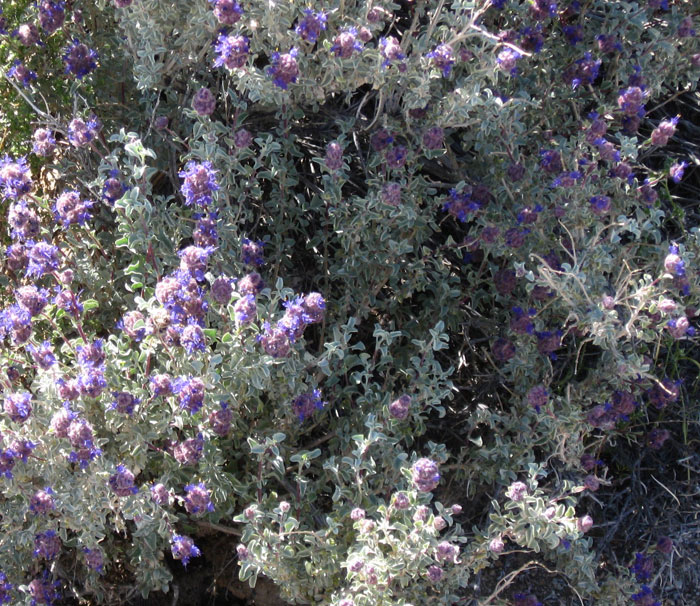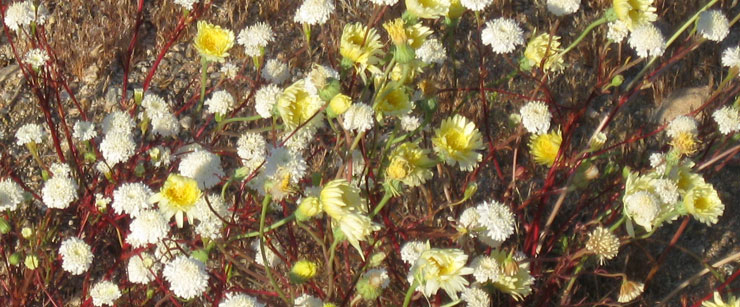^Flowering Puprle sage (Salvia dorrii).
^Desert dandelion (Malacothrix glabrata) and white Fremont pincushion (Chaenactis fremontii) flowers.
UPDATE! April 16, 2009 >>here.
Old Growth Desert in Bloom
Early April, 2009, Ivanpah Valley in San Bernardino Valley, California -
Even though the rains were not great this past winter, wildflowers were still common in the Mojave Desert. We walked across the old granitic fan sloping gradually off Clark Mountain, by creosote rings perhaps thousands of years old, by strange tree-like cholla cacti, to a small gray limestone hill. The entire area we traversed will be graded by machinery and stripped of all life if the planned Ivanpah Solar Energy Project is built. So we wanted to check out what will be lost.
The desert here was quite active, Black-throated sparrows singing from the tops of shrubs, Zebra-tailed lizards skittering across washes, and hordes of mammal tracks filling the sand: Kit foxes, kangaroo rats, pocket mice, jackrabbits, even a few wild burros. The place was waking up from cold winter rest, and a diversity of wildflowers showed themselves.
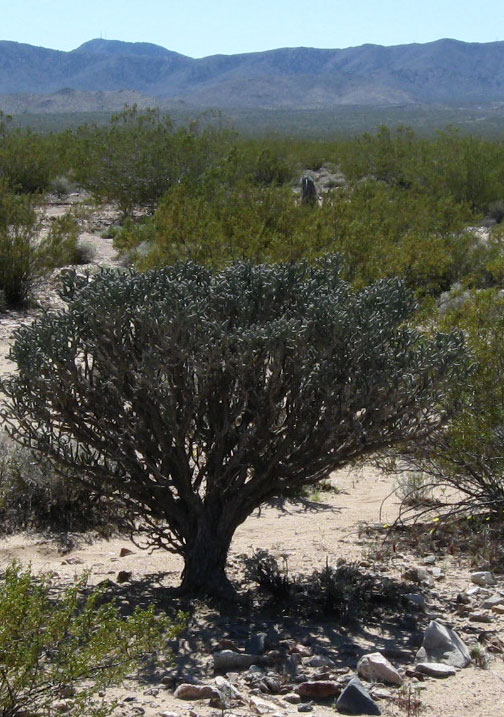
^An odd spineless Pencil cholla (Opuntia ramosissima) with a trunk on the Ivanpah Solar Project site.
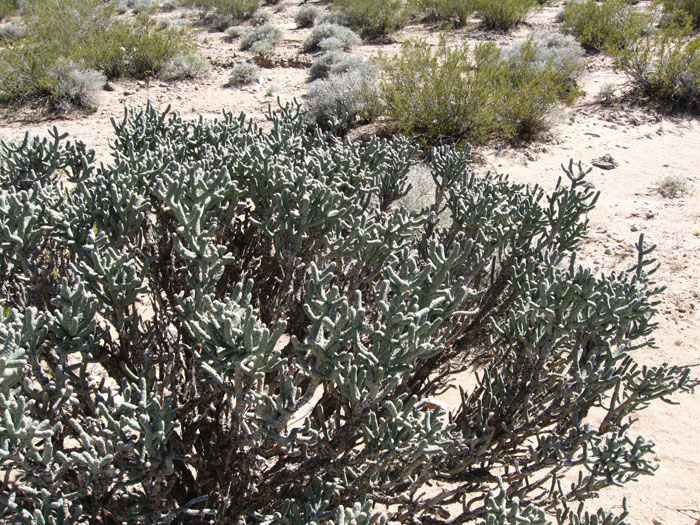
^The spineless Pencil cholla. Others in the area had plenty of spines.
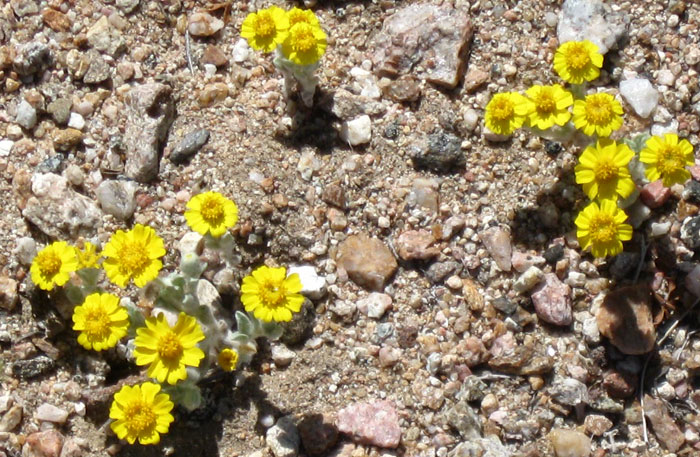
^Woolly daisy (Eriophyllum wallacei), common but less than an inch or two tall.
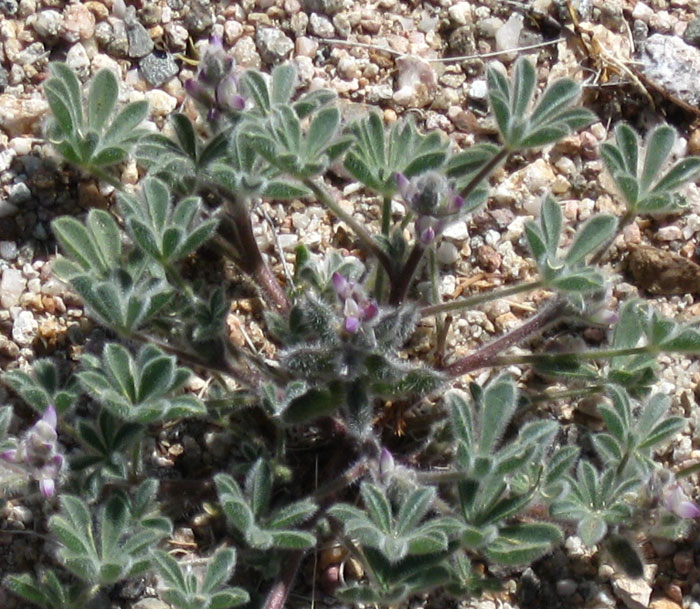
Small annual Elegant lupines (Lupinus concinnus) bloomed on the gravel.
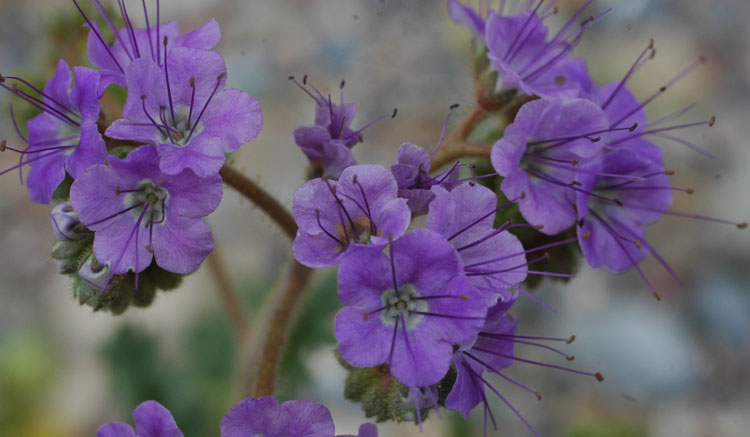
^Notch-leaf phacelia (Phacelia crenulata).
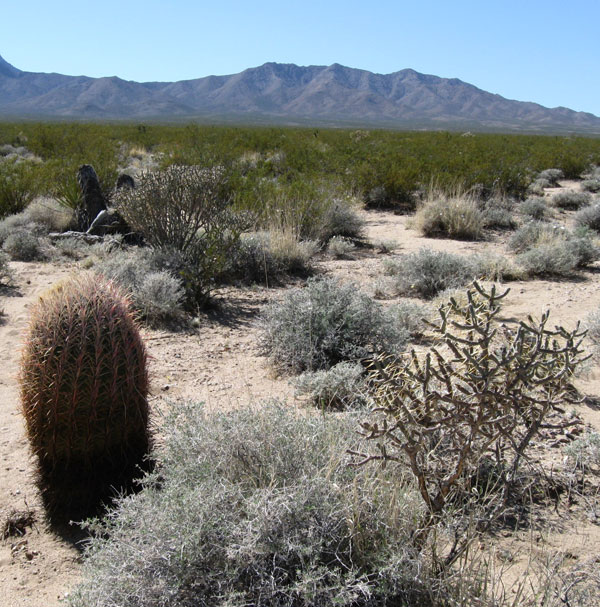
^This fan has old growth Mojave desert scrub growing on stable fan areas between washes. Here a large Barrel cactus (Ferocactus acanthodes) shares the area with spiny Pencil cacti, Bursage (Ambrosia dumosa), Creosote (Larrea tridentata), and Galleta grass (Hilaria rigida).
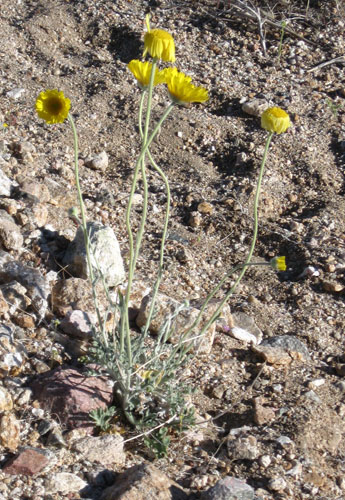
^Desert marigold (Baileya multiradiata).
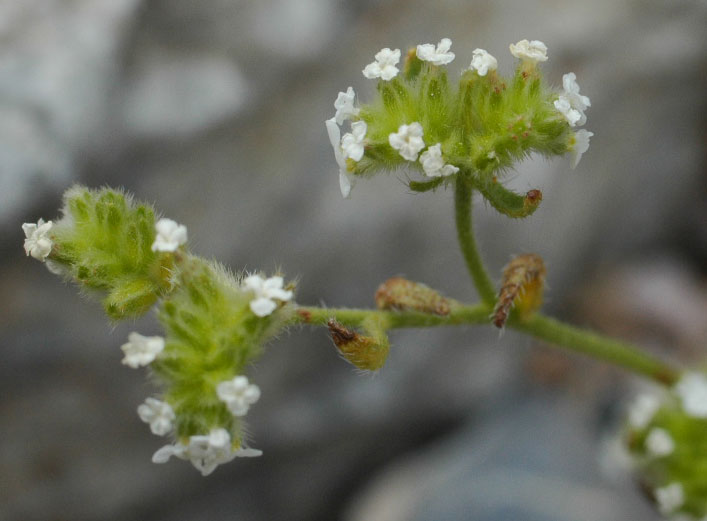
^Forget-me-not (Cryptantha sp.).
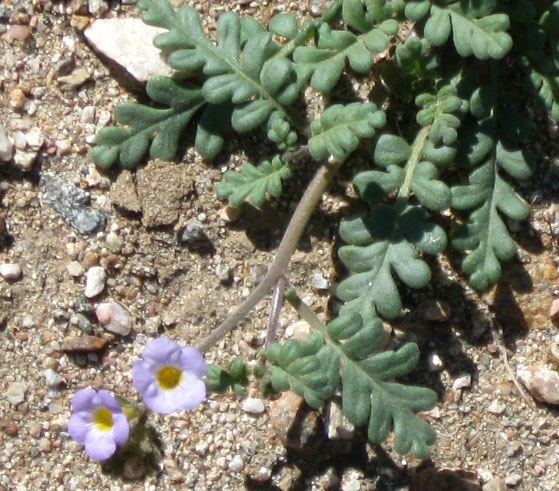
^Fremont phacelia (Phacelia fremontii).
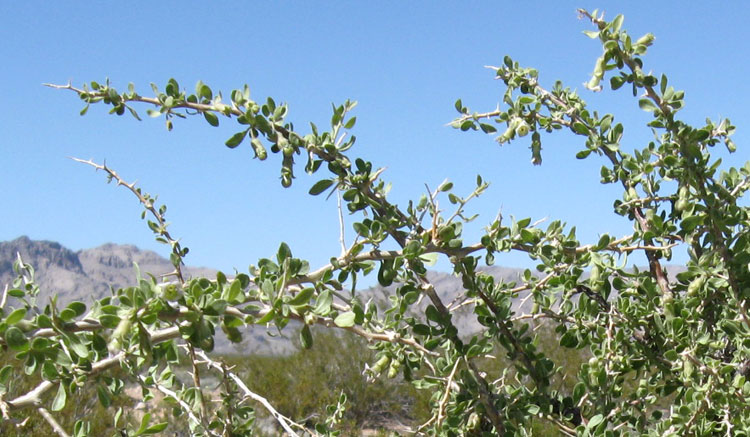
^Copper's desert thorn (Lycium cooperi) with white bell-like flowers. These shrubs drop their leaves in the dry season, and flush out after a fairly good winter rain. They produce edible berries.
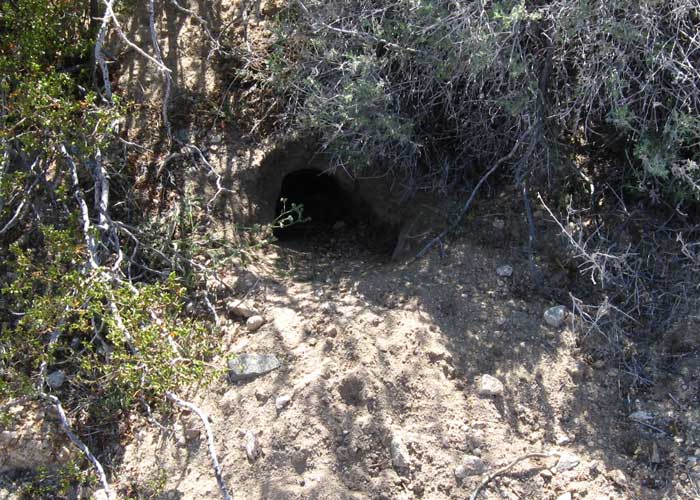
^We discovered an active Desert tortoise (Gopherus agassizii) burrow under creosote and bursage bushes. The tortoise was probably out feeding on wildflowers.
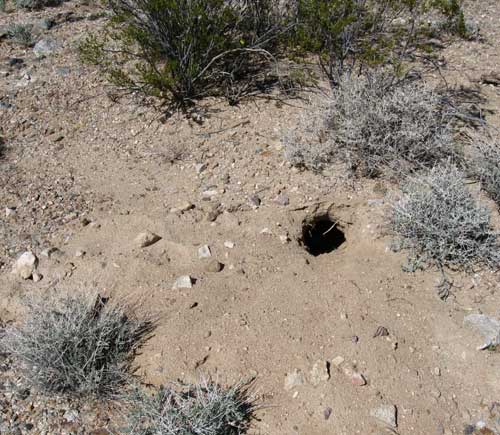
^A probable Kit fox (Vulpes velox) burrow.
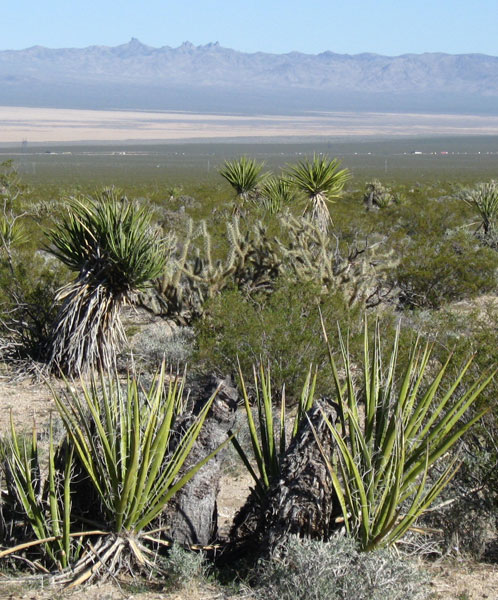
^Dense Mojave yuccas (Yucca schidigera) and some Buckhorn chollas (Opuntia acanthocarpa) cover the ground, with Castle Peaks in the distance next to Mojave National Preserve. This ground will be dug out and flattened for Ivanpah Solar Energy Project.
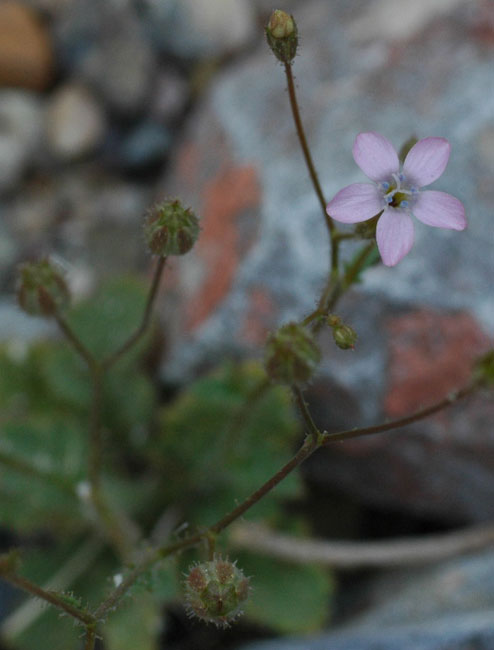
^Gilia (Gilia sp.).
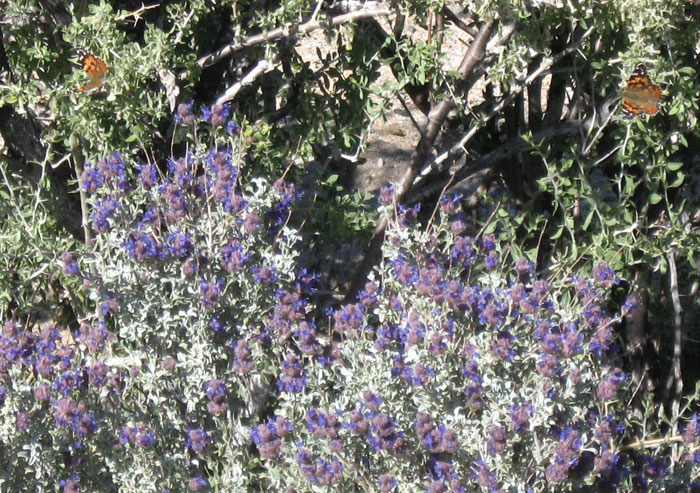
^Migrating Painted lady butterflies (Vanessa cardui) stop to feed on the nectar of Desert thorn (Lycium andersonii) flowers. Purple sage (Salvia dorrii) blooms below.
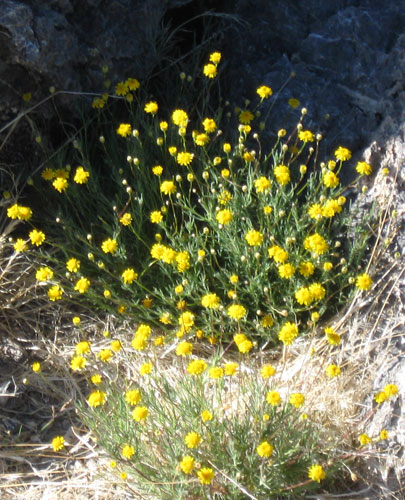
^Threadleaf groundsel (Senecio flaccidus).
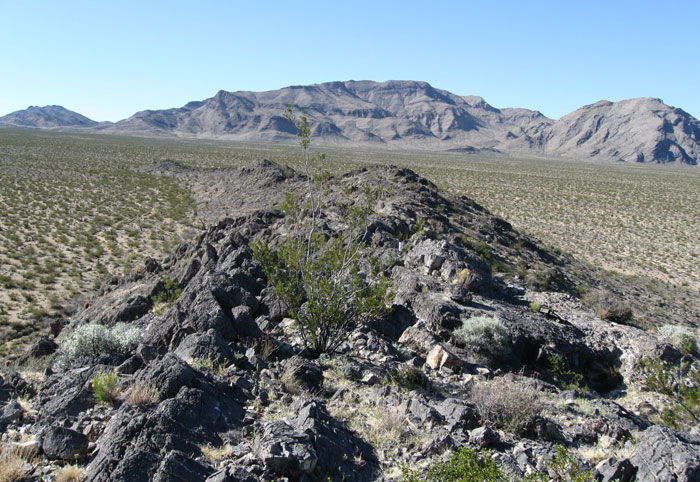
^The small gray limestone hill, with some unusual plantlife. The flat desert to the right will be scraped for the solar thermal plant. The Stateline Wilderness mountains are visible in the background, quite close to this fuure possible industrial development.
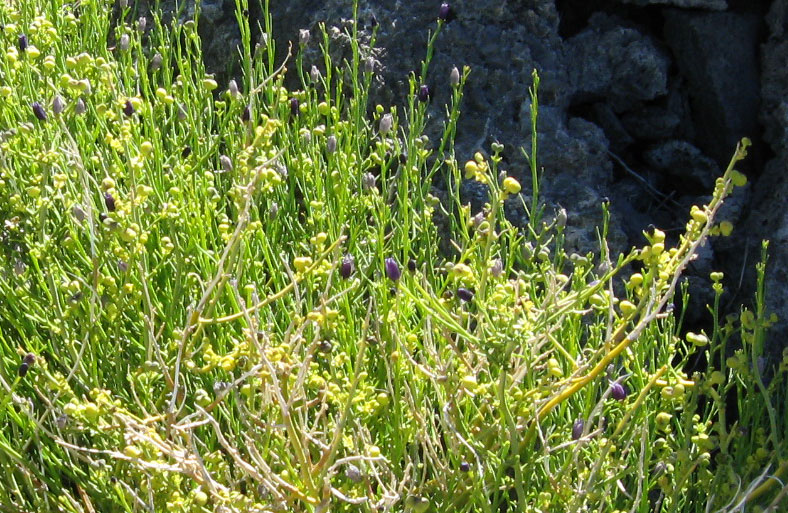
^Turpentine broom (Thamnosma montana) with purple flowers.
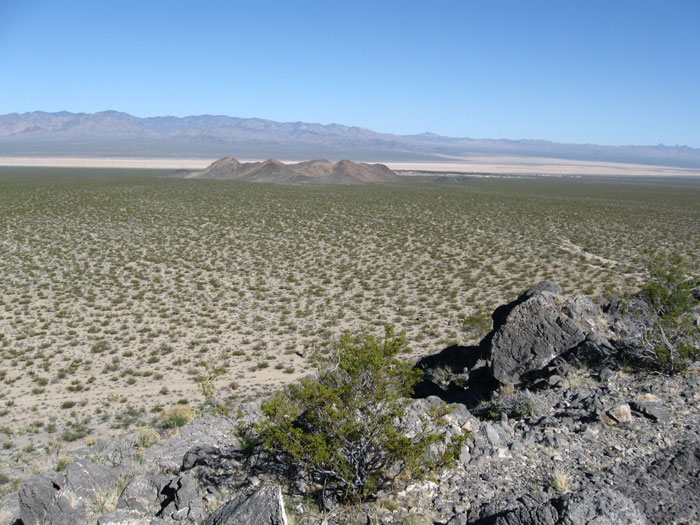
^Looking east from the small limestone hill toward Ivanpah dry lake bed. This entire flat desert vista will be destroyed by the solar project.
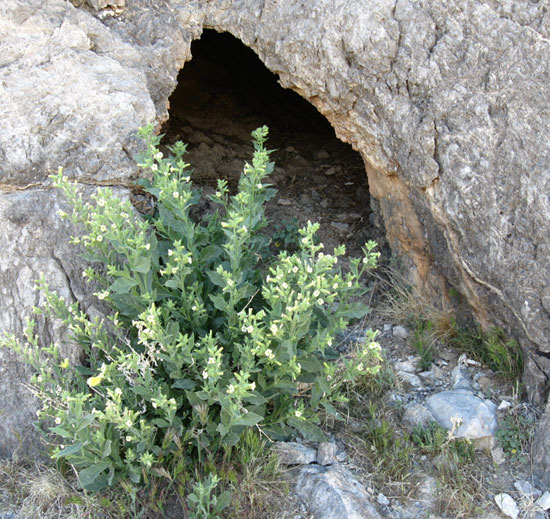
^Coyote tobacco (Nicotiana obtusifolia) on the limestone hill.
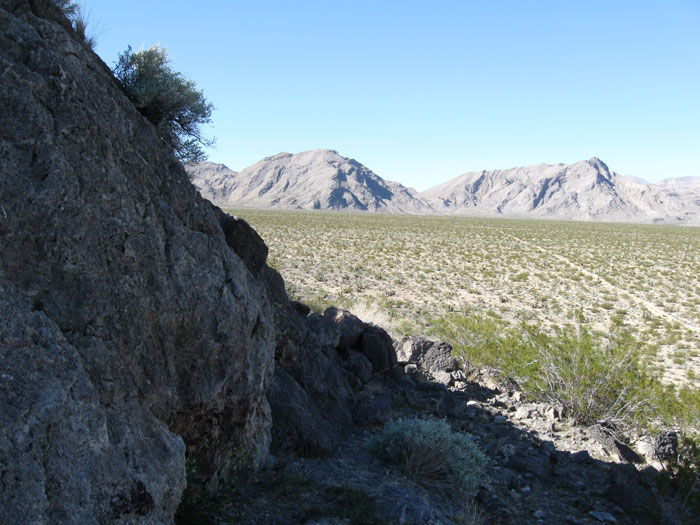
^View from the limestone hill across the project site.
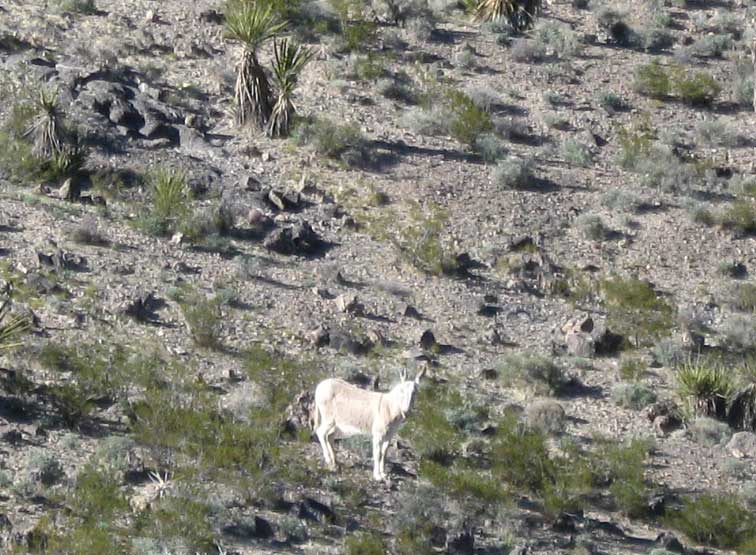
^A wild burro watched us. The population of feral burros here appeared to be small and the impact to the vegetation light.
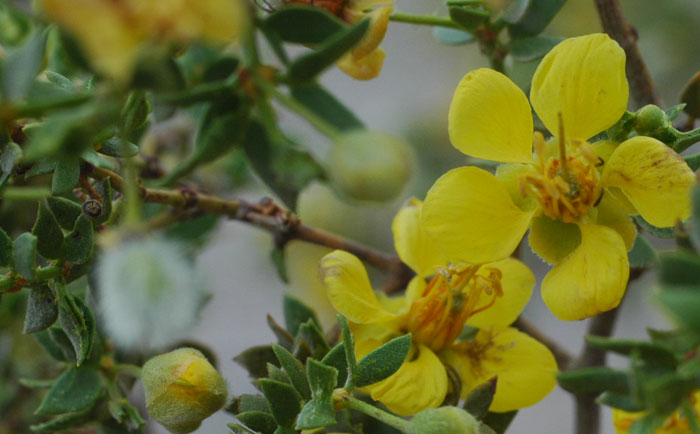
^Creosote flowers (Larrea tridentata).
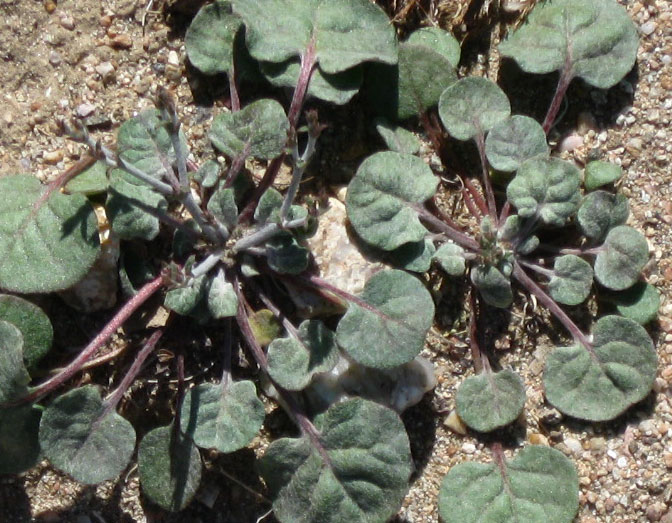
^Annual buckwheat (Eriogonum sp.) leafy rosettes begin to send up stems. They bloom later in spring.
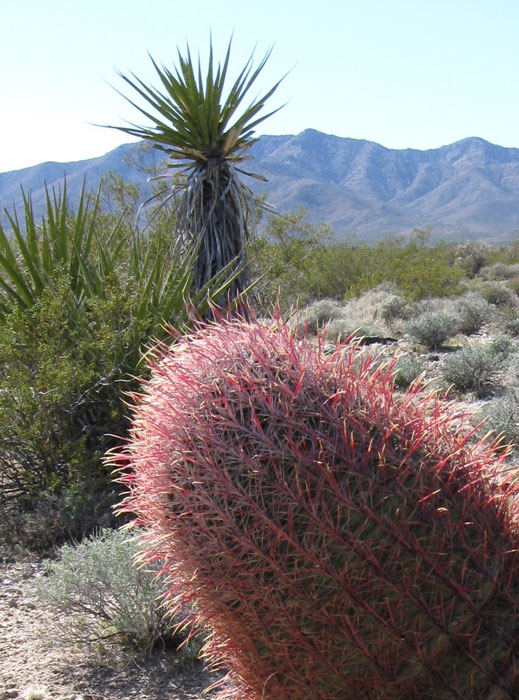
^Huge Barrel cactus, or "Bisnaga," decades old. As the Ivanpah solar project is built the developers say they will move and replant these giants.We ask why do they have to be dug up at all? Plenty of rooftops already exist for solar projects.
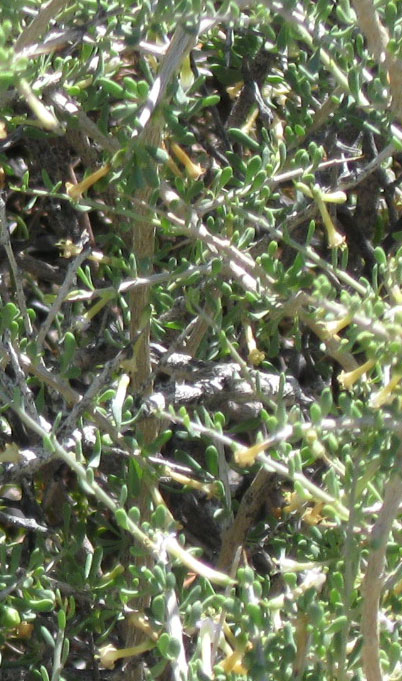
^Cream-colored tubular flowers of Desert thorn (Lycium andersonii).
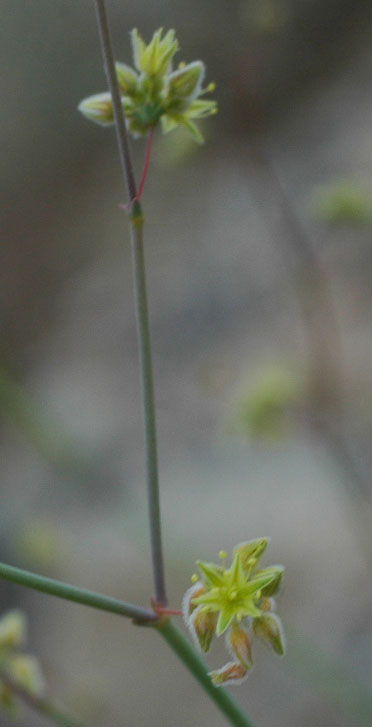
(Delicate flowers of Trumpet buckwheat (Eriogonum inflatum).
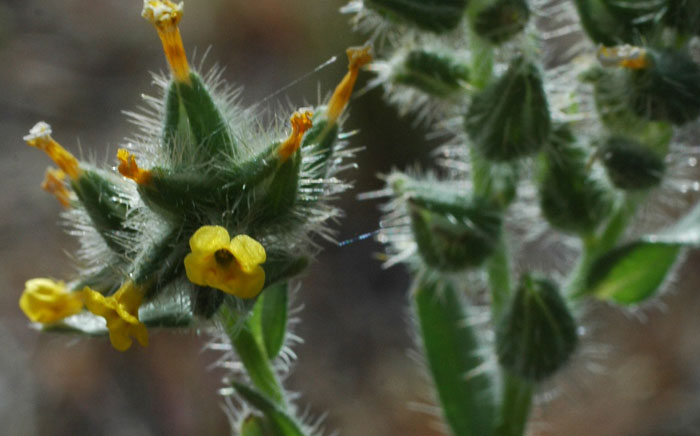
^Fiddleneck flower close-up (Amsinckia tessellata).
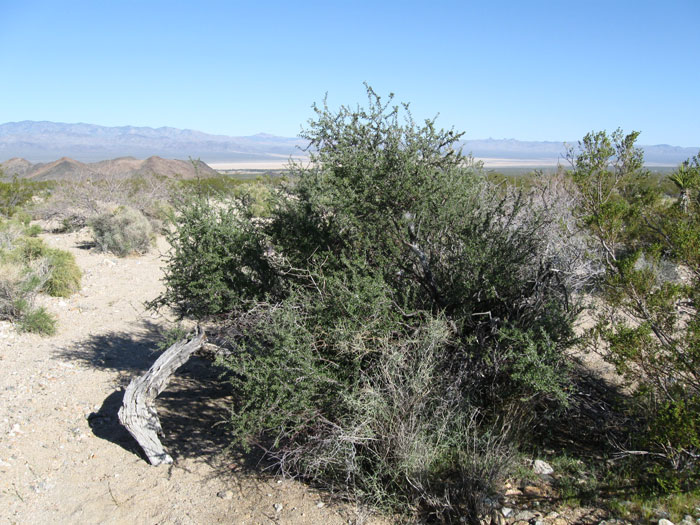
^Large Desert almond shrubs (Prunus fasciculata) grew in the washes. Gambel's quail called nearby.
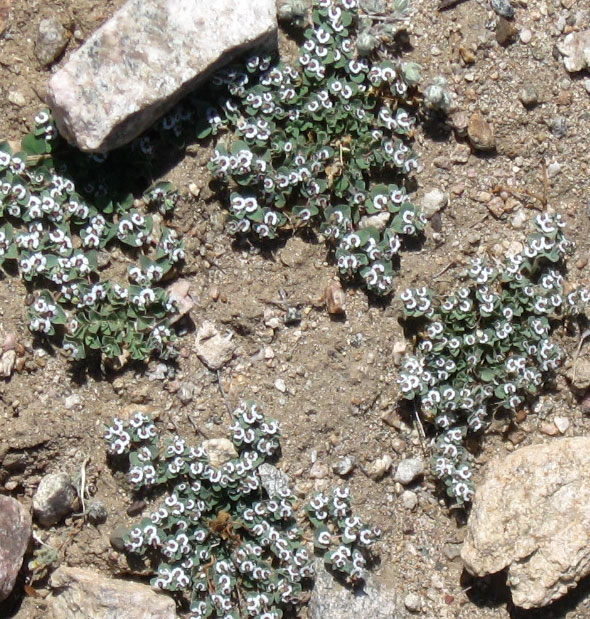
^Ground-hugging mats of Rattlesnakeweed (Chamaesyce albomarginata).
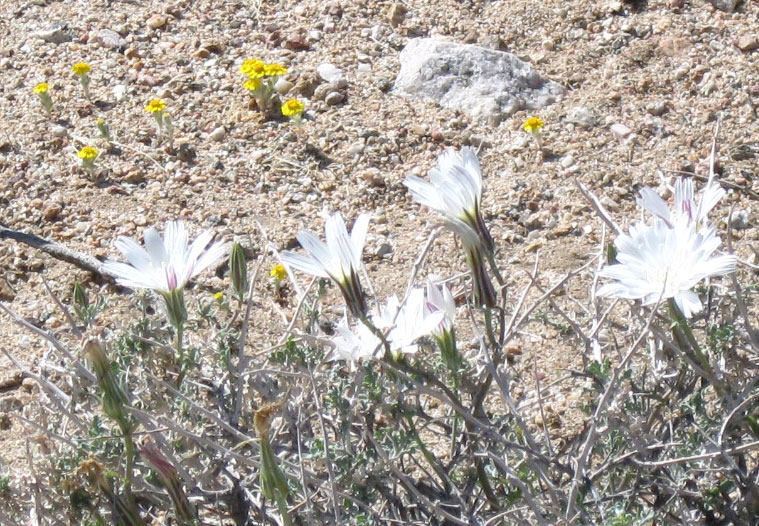
^Desert chicory (Rafinesquia neomexicana).
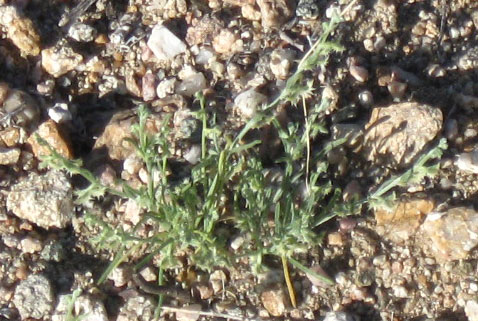
^Tiny Comb-burs (Pectocarya sp.) grew commonly. Their flowers are barely visible.
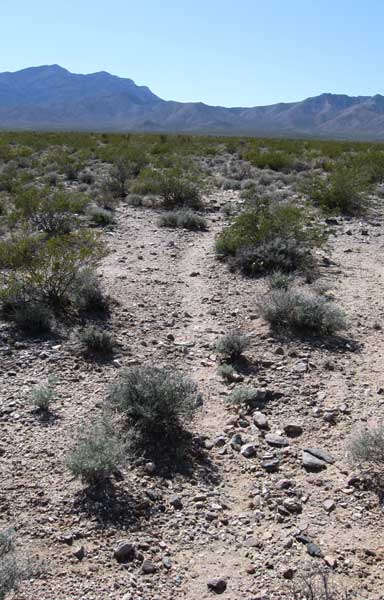
^An old Indian trail crosses the project site heading to Clark Mountain in Mojave National Preserve.
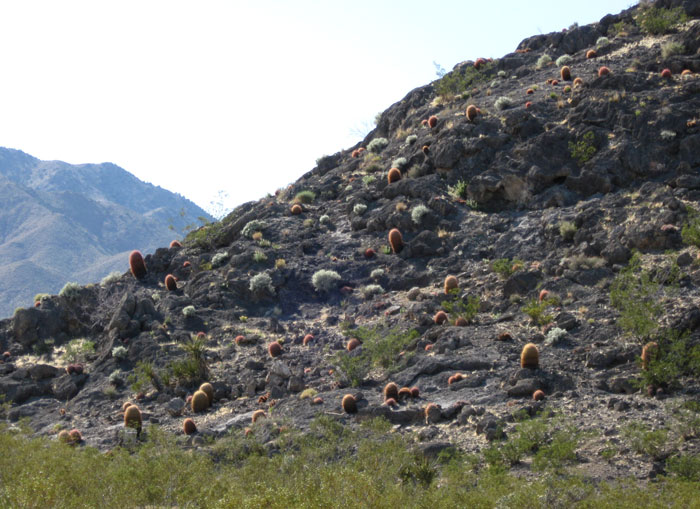
^Barrel cacti grow densely on the small limestone hill.
The Desert Stores Carbon
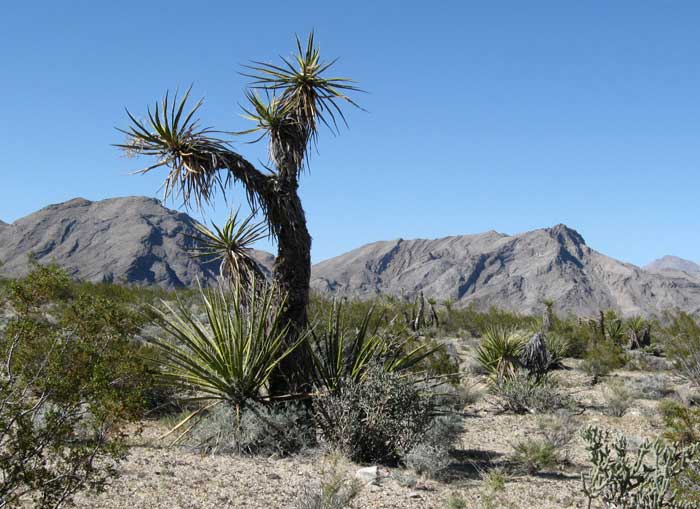
^Tall Mojave yucca, Pencil cholla, bursage and creosote.
Arid habitats such as deserts and grasslands can actually store large amounts of carbon, mitigating greenhouse gas emissions. These soils sequester or store carbon due to plant and soil microorganism productivity, leaf and root litter accumulation (both above and below ground) and the stability of by-products of soil biological processes during decomposition.
But when soils are disturbed, such as from tilling or bulldozing for solar farms, a large proportion of the soil carbon is lost, previously utilized by soil microbes. Perennial plant species especially help stabilize soil carbon from soil microbes, fungi, and invertebrate communities. (From "Soil Biology and Carbon Sequestration in Grasslands" by L. Jackson, M. Potthoff, K. Steenwerth, A. O'Geen, M. Stromberg, and K. Scow. In, California grasslands: Ecology and Management, edited by Mark Stromberg, Jeffrey Corbin, and Carla D'Antontio, University of California Press: Berkeley, 2007.)
CO2 flux readings suggest that the Mojave Desert in Nevada is absorbing carbon at the rate of a temperate forest, according to Lynn Fenstermaker, a remote sensing ecologist at the Desert Research Institute (DRI) in Las Vegas. Deserts are unsung players in the global carbon cycle. Georg Wohlfahrt, an ecologist at the University of Innsbruck in Austria, and his colleagues measured CO2 flux above the loamy sands of the Nevada Test Site. From March 2005 to February 2007, the desert biome absorbed on average roughly 100 grams of carbon per square meter per year --comparable to temperate forests and grassland ecosystems. Deserts are a larger sink for carbon dioxide than had previously been assumed.
The effect could be huge: about 35% of Earth's land surface, or 5.2 billion hectares, is
desert and semiarid ecosystems. If the Mojave readings represent an average CO2 uptake,
then deserts and semiarid regions may be absorbing up to 5.2 billion tons of carbon a
year -- roughly half the amount emitted globally by burning fossil fuels, says John
Arnone, an ecologist in DRI's Reno lab. (From Science 13 June 2008: Vol. 320. no. 5882, pp. 1409 - 1410.)
Studies in Chinese deserts suggest that alkaline soil is absorbing large quantities of CO2 in an inorganic form. In addition, cryptobiotic crusts, and expanded shrub cover due to increased average precipitation could also be storing the carbon. Cryptobiotic or cryptogamic crusts are a mat of filaments of lichen-like growths of cyanobacteria, algae, and fungi that become active during rains. The very soils of Ivanpah Valley photosynthesize due to these abundant crusts.
A University of Queensland scientist did research showing that clearing of native vegetation has made recent Australian droughts hotter >>here.
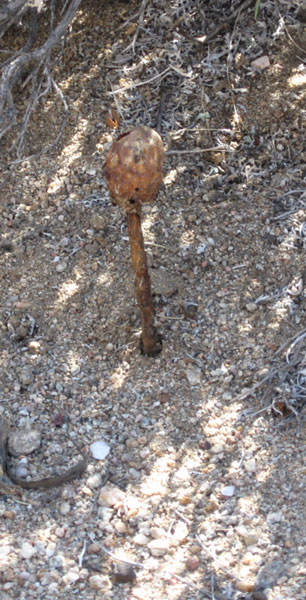
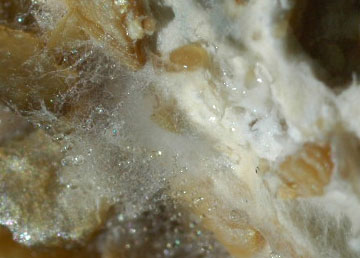
^Mycelial threads of mushrooms growing in the desert soil underground.
<Puff ball on stalk above ground at the Ivanpah project site.
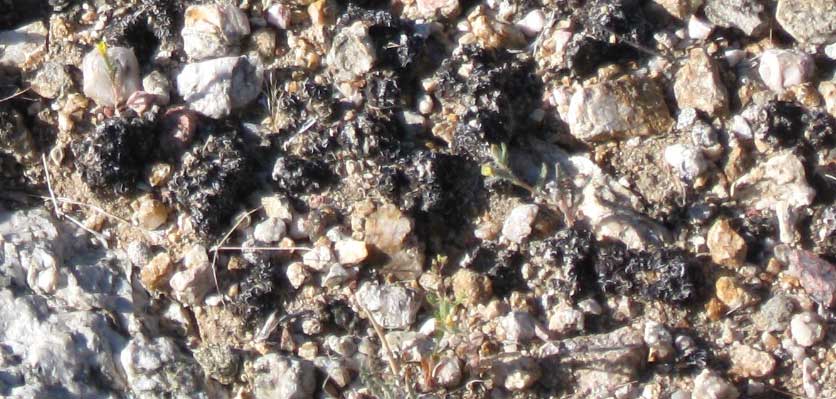
^Dark cryptobiotic crust in gravelly soil, abundant at the Ivanpah site.
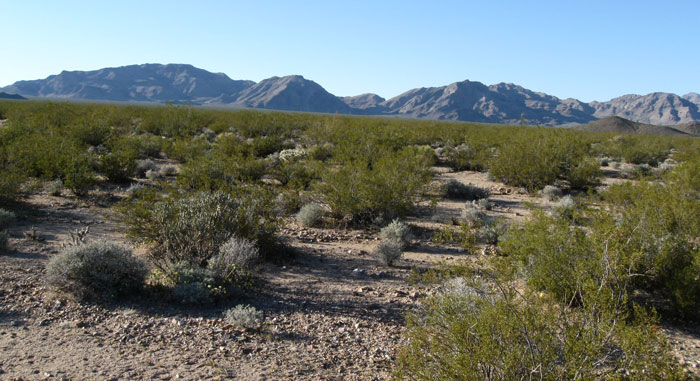
^Will a rich, growing, vibrant desert be bulldozed to try to stop global warming? Scraping the desert here will actually release carbon into the atmosphere. Are Polar bears worth more than Desert tortoises?
The Future?
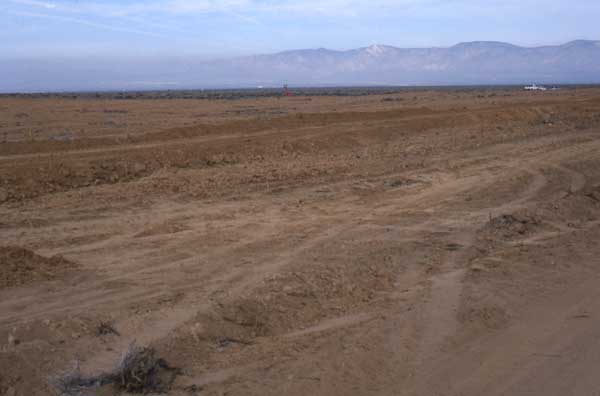
^Scraped desert ready for development. This was a creosote shrub habitat with yuccas and Desert tortoise a few months before.
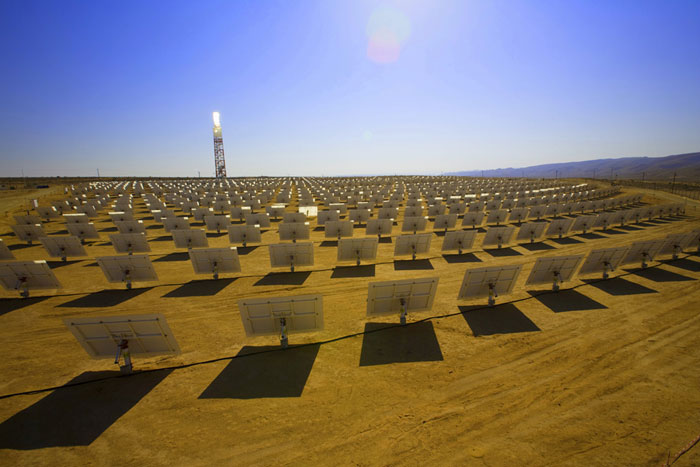
^Completed solar thermal power tower farm, similar to BrightSource Energy's Ivanpah Solar Energy Project plan. No life left. (Photo courtesy www.brightsourceenergy.com)
"Harnessing the sun’s energy will be paramount to addressing climate change and protecting our natural heritage. Proven and cost-effective technologies like BrightSource Energy’s solar thermal systems exist today and are ready to be implemented. The time to act is now."
--Robert F. Kennedy Jr.
(From C-SPAN, off www.brightsourceenergy.com)
HOME..........Ivanpah Solar Project........Ivanpah Update 4/16/09
